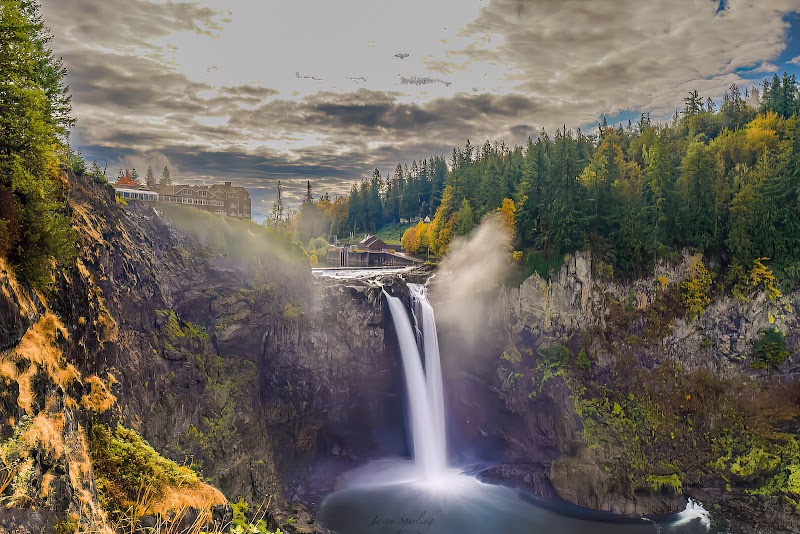
Rattlesnake Ledge Hike: Epic Views a Short Drive from Seattle
Rattlesnake Ledge is a popular, moderately challenging hike just outside Seattle that rewards with panoramic views of Rattlesnake Lake and the surrounding Cascades. Perfect for both casual trekkers and seasoned hikers, this trail combines accessible terrain with stunning vistas, making it a must-do outdoor adventure close to the city.
Start Early for Best Experience
Parking fills quickly on weekends and afternoons; early mornings offer quieter trails and softer light for photos.
Bring Enough Water
Carry at least two liters per person, especially on warmer days, to stay hydrated throughout the steady climb.
Wear Proper Footwear
Sturdy trail shoes with good grip help navigate rocky, root-filled sections safely, especially after rain.
Practice Leave No Trace
Stick to the trail and pack out all trash to protect this heavily trafficked natural area for future hikers.
Rattlesnake Ledge Hike: Epic Views a Short Drive from Seattle
Just 45 minutes east of Seattle, Rattlesnake Ledge offers a brisk hike that tests your legs and rewards you with a commanding view of Rattlesnake Lake and the surrounding Cascades. The trail stretches 4 miles round trip with a 1,160-foot elevation gain, winding through a dense forest where Douglas firs and cedars stand like guardians. The path pushes you steadily upward, each step measured but purposeful, with roots and rocks daring your footing to stay sharp. At the top, the ledge sprawls before you—a granite shelf holding the open sky, the pulse of wind rolling off the lake, inviting reflection.
This hike is approachable enough for most fit adventurers but still offers a satisfying challenge, requiring sturdy footwear and a good water supply. Early morning starts help avoid crowds and let you catch softer light filtering through the canopy. Parking fills early on weekends, so plan accordingly or consider weekday visits.
The trail’s terrain feels alive: streams chatter alongside your ascent, and moss clings stubbornly to stone, as if reminding you nature isn’t just a backdrop but an active participant. The summit view is clear and wide, revealing the turquoise sweep of Rattlesnake Lake and mountain peaks daring you to linger. It’s a moment to breathe in deeply, appreciating the rawness of the landscape that’s sharply defined yet quietly inviting.
Prepare for a steady climb with occasional rocky sections, but nothing too technical. The return trip demands attention too, with gravity pulling and roots waiting. Make hydration a priority; temperatures can climb quickly under the sun’s gaze. Even in warmer months, the dense forest offers pockets of cool shade to steady your pace.
Whether you’re after a quick outdoor escape or a reliable weekend workout, Rattlesnake Ledge delivers an experience that balances effort and reward, grounding you in one of the Pacific Northwest’s prized viewpoints just a short drive from the city.
Key practical tips: start early to beat crowds, wear solid hiking shoes, bring at least two liters of water, and pack a light snack. Check trail conditions ahead—especially after rainfall, as slippery roots and rocks can turn the trail more challenging. Respect the environment by staying on marked paths and packing out all trash.
In all, this hike stands out not because it surprises, but because it perfectly delivers a classic Northwest adventure: tangible, invigorating, and visually striking, with nature that asserts itself at every step.
Nearby Trips
All Adventures
Boat Charters
Water Activities
Adventures near North Bend, Washington
Discover the unique and memorable adventures that make North Bend, Washington special.
Frequently Asked Questions
How long is the Rattlesnake Ledge trail?
The trail covers about 4 miles round trip, with an elevation gain of roughly 1,160 feet, making it a moderately paced hike suitable for many skill levels.
Is the trail dog-friendly?
Yes, dogs are welcome but must be kept on a leash to protect wildlife and other hikers.
Are permits required to hike Rattlesnake Ledge?
Currently, no permits are needed, but parking restrictions and fees apply at the trailhead parking area.
What are the best months to visit for avoiding crowds?
Weekdays during spring or fall offer less crowded experiences; weekends tend to be busiest in summer and fall.
Are there any alternative routes or extended trail options?
While the main trail is straightforward, hikers can explore side paths around the lake or continue onward on connecting trails for longer hikes.
What wildlife might I encounter on the trail?
Expect to see birds like woodpeckers and hawks, occasional deer, and smaller forest creatures such as squirrels and chipmunks.
Recommended Gear
Hiking Shoes
Solid grip shoes with ankle support help manage roots and rocks safely on the trail.
Water Bottle or Hydration Pack
Ample water is critical, especially in summer when heat intensifies thirst and fatigue.
Light Pack with Snack
Keep energy levels stable with snacks, ideally high in protein and carbs.
Layered Clothing
Weather shifts fast; layers allow adjustment to temperature and wind exposure, especially near the ledge.
Local Insights
Hidden Gems
- "Lookout Rock, a smaller vantage point just before the main ledge, offers a quieter spot to rest and enjoy views."
- "The nearby Rattlesnake Lake offers calm waters for kayaking or fishing after your hike."
Wildlife
- "Keep an eye out for Northern Flickers and Steller’s Jays, both vocal residents of the forest canopy."
- "Black-tailed deer sometimes graze near the trail edges, especially in quieter early hours."
History
"The area around Rattlesnake Ledge was historically used by indigenous Snoqualmie people and later developed for recreation as Seattle expanded eastward."
